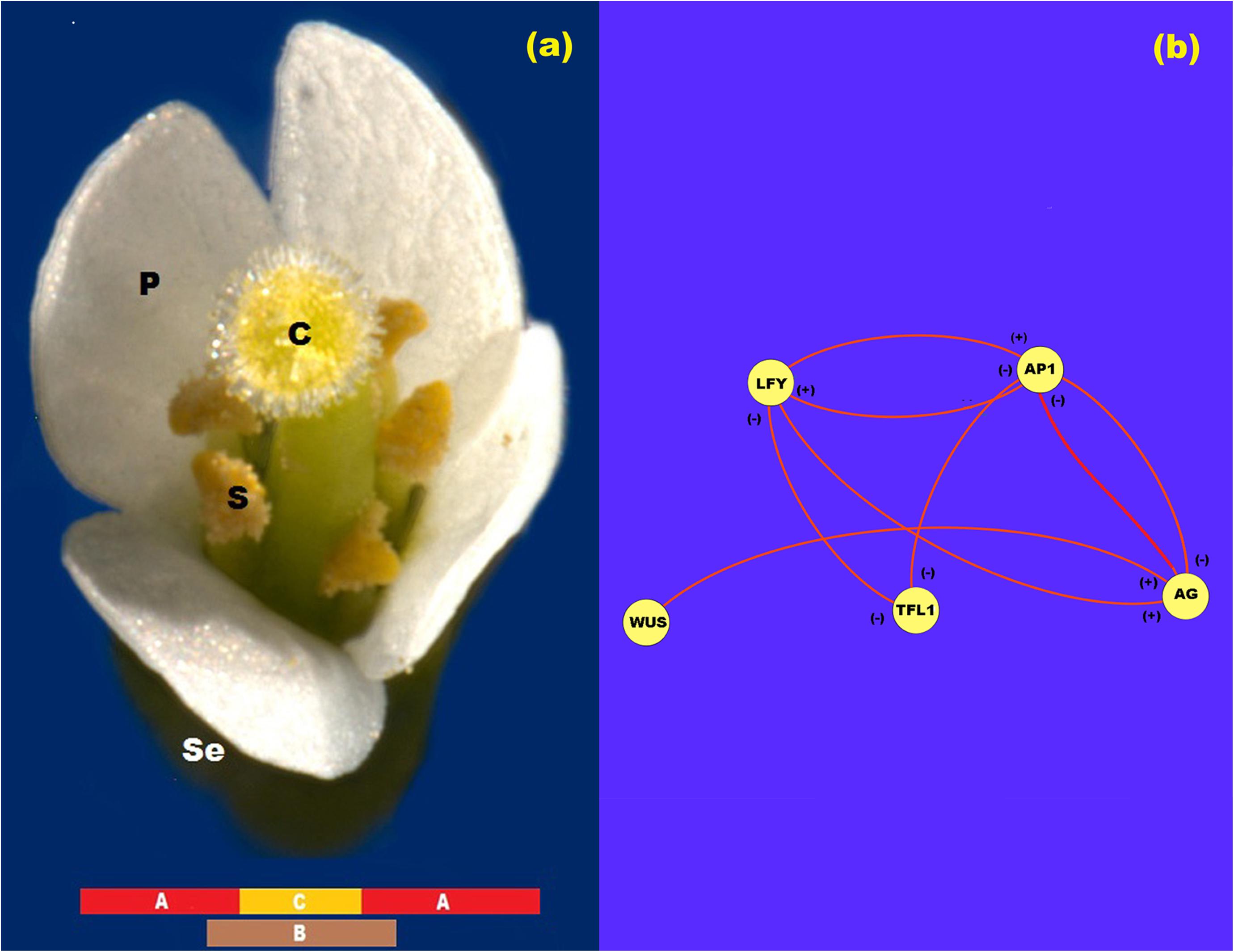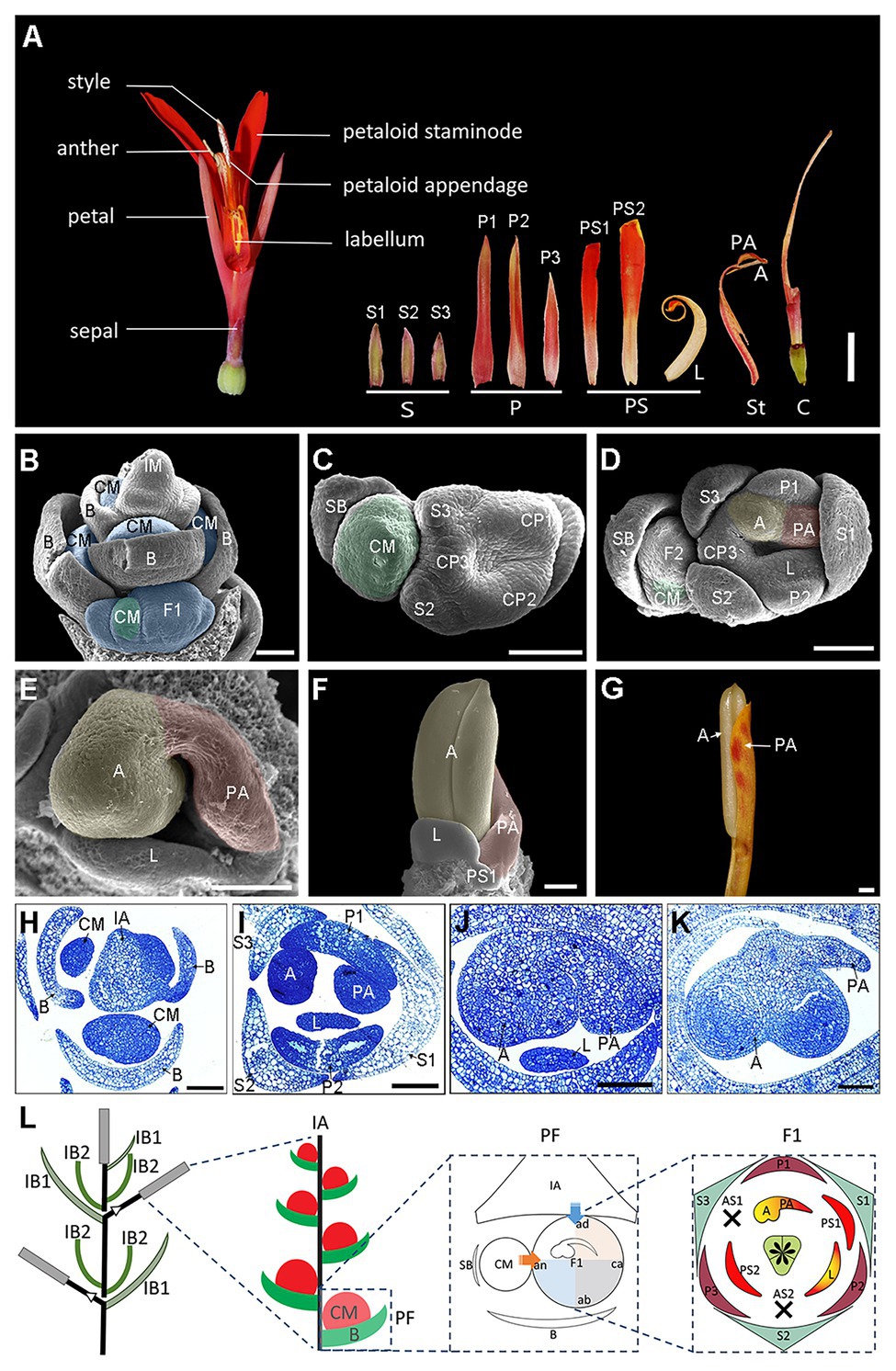

The Arabidopsis CYC-like gene, like CYC in snapdragon, is expressed dorsally in floral meristems, even though the meristems are destined to form radially symmetrical flowers. A possible explanation for the repeated co-option of CYC-like genes comes from studies in Arabidopsis, a species with radially symmetrical flowers.

CYC-like genes have been recruited several times independently during angiosperm evolution to carry out this function (reviewed in ). Later, they continue to be expressed in dorsal petals to control their size and shape and in the dorsalmost stamen primordium, where they cause abortion of this organ to form a staminode (Figure 1a). In Antirrhinum majus (snapdragon, family Plantaginaceae), CYC and its close paralog DICHOTOMA ( DICH) are expressed early in the dorsal domain of the flower meristem, where they limit the rate of cell proliferation and primordium initiation. However, some of these regulatory changes have been maintained during evolution, probably by natural selection, giving rise to adaptive novel traits such as corolla zygomorphy and stamen abortion (reviewed in ). Not surprisingly, their activity is tightly controlled, both spatially and temporally, as subtle alterations in their regulation usually lead to noticeable phenotypic effects that are, in most cases, deleterious. Specific effects vary depending on the tissue in which the genes are acting. Ĭlass II TCP transcription factors have dramatic effects on cell proliferation and differentiation. The photograph of Opithandra in (a) isreproduced with permission from. amara have demonstrated that developmental genetic pathways using CYC-like TCP genes have been independently recruited to establish bilateral flower symmetry. (b) Three of many independent transitions from radial floral symmetry to bilateral symmetry across the core eudicot lineage are indicated in bold. In Veronica, staminodes are absent in the dorsal and ventral flower regions where stamen loss is inferred. In Veronica and Gratiola, there is no correlation between CYC-like gene expression and additional stamen reduction. In Mohavea and Opithandra, expression correlates with additional stamen reduction compared with Antirrhinum. In Veronica, Gratiola and Opithandra, at least one other close paralog of the CYC-like gene whose expression is illustrated has a highly divergent pattern of expression. Shading indicates the approximate expression of at least one CYC-like TCP homolog in each of these lineages X indicates the presence of a staminode. Antirrhinum, Mohavea, Veronica and Gratiola are members of the Plantaginaceae Opithandra is a member of the Gesneriaceae. (a) Images and diagrams of flowers of several Lamiales lineages, illustrating the diversity in stamen reduction. Independent recruitment of CYC-like genes for the evolution of floral zygomorphy and stamen reduction.


 0 kommentar(er)
0 kommentar(er)
